History of Silchester Roman City Walls and Amphitheatre
We set off to see the Silchester Roman ruins on a lovely autumn day it was just a short car trip down the motorway from Berkshire and it sits on the Hampshire and Berkshire border, and although I had read many reviews that were not particularly favourable we were looking forward to a good walk. England and London have a lot of Roman ruins and they are a fascinating part of British history.
Indeed, there is not much to see at Silchester unfortunately and it is very badly signposted, most of the signs simply say footpath but don’t really direct you anywhere. We found many Roman ruin walls to walk on and the amphitheatre (which is not signposted) is off in a field that is not marked. It is a gorgeous walk around the walls though and if you have a good imagination you can see the Roman town before your eyes.
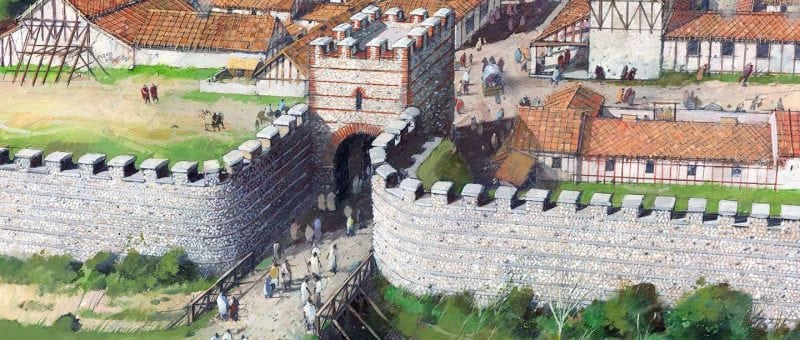
In 2014 the archaeologists from Reading University packed up their tools and left the roman ruins in peace. They had spent 18 years digging and unearthing the entire site which is known as Insula IX, but it still remains a mystery as to why this Roman town was abandoned in the sixth century.
Why was Silchester abandoned? Archaeological evidence suggests that the medieval village lay between the amphitheatre and the south gate. This village seems to have been deserted around 1400, probably as a result of the decimation of villagers by the plague.
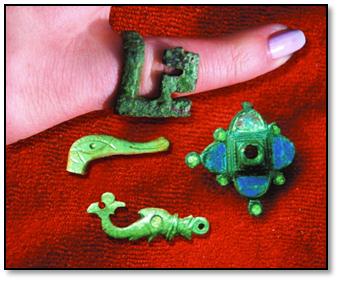
Silchester finds
Silchester Roman Town was first dug up by the Victorians. The staff and students from Reading University have, over the years, found many incredible items including the first olive stone ever found in the UK, proving that the people were eating these delicacies long before the Romans arrived. They discovered little bones with marks on them that indicated puppy fur was taken to make fur cloaks, there were ritual burials of cats, dogs and ravens at the site.
Silchester Roman
The Silchester Horse
This bronze figure of a horse consists of two conjoined triskeles (three branched motifs) which are reminiscent of late Iron Age art. It was cast in one piece and then hammered and filed to shape. Both sides are decorated although now one side is clearer than the other. It was probably originally enamelled.
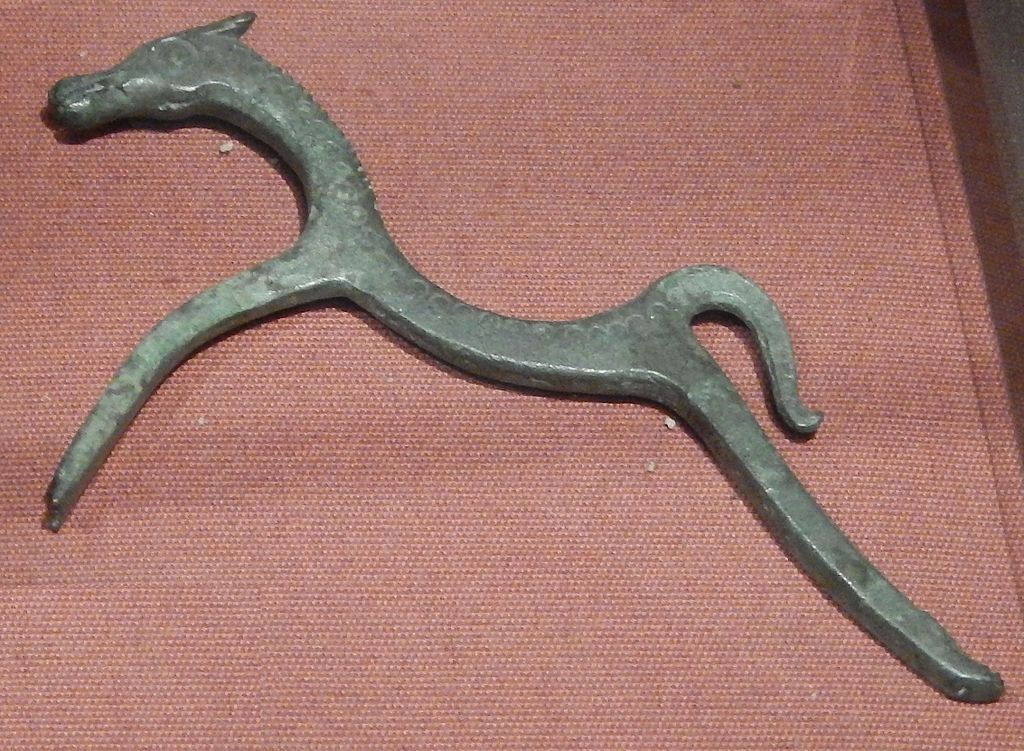
The horse, usually referred to as the Silchester Horse, was found by Reverend J.G. Joyce on 27 October 1870 during the excavation of the Basilica at the Roman town of Calleva Atrebatum.
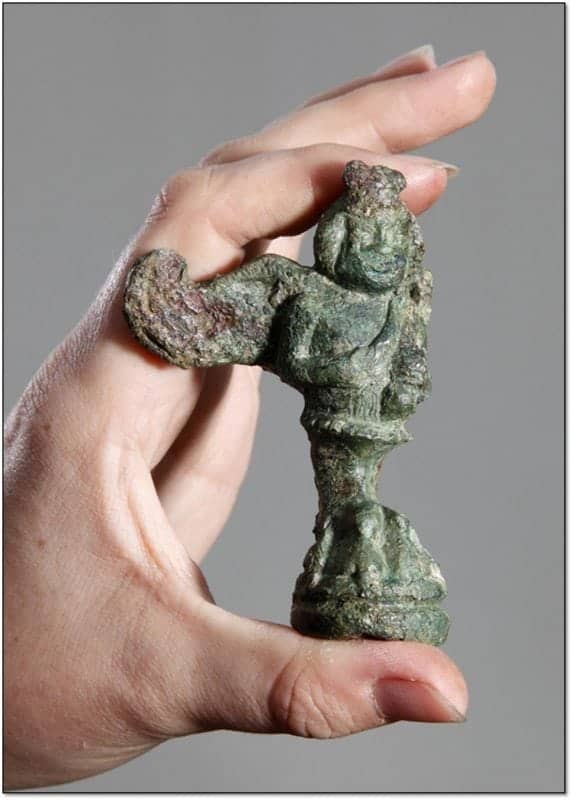
The site has been substantially excavated since the late 19th century, and today Silchester remains one of the best-preserved Roman towns in Britain. In the 19th century the site, Roman Calleva Atrebatum, produced magnificent finds now on display at Reading Museum, including superb mosaics and one of the most famous Roman finds in Britain, a gilt bronze eagle which inspired the novel by Rosemary Sutcliffe, The Eagle of the Ninth, and the film The Eagle.
The Silchester Eagle
The Silchester Eagle is a cast bronze figure of an eagle found by Rev J.G. Joyce in the Basilica on 9 October 1866. Its wings, now missing, would originally have been outstretched. The curve of the feet suggests that it stood on a globe. It is not a military eagle but is probably part of a large figure of an emperor or a god.
The eagle was repaired during its lifetime when replacement wings and probably new feet were fitted. It was then damaged again when it lost its replacement wings and suffered damage to its replacement feet.
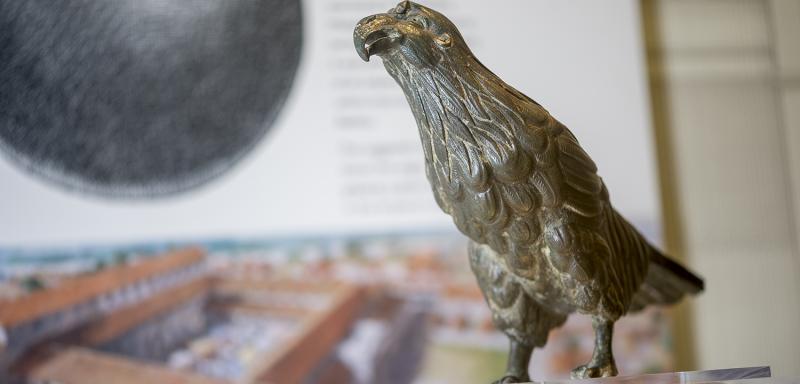
History of the Silchester Roman Ruins
The archaeologists set out to solve two puzzles, when was the town built and who built it and when and why was it left abandoned. The first one is felt to be solved as they believe that the town was founded by a Roman called Commius, who was the leader of the Atrobates tribe during the Roman conquest.
It is understood that Commius had some kind of argument with his Roman allies and had to leave Gaul. Silchester or the Roman version was located in the perfect place an easy-to-defend hilltop near two rivers (Kennet and the Thames). The citizens set up building plots near and along good roads and traded in grain, glassware, and pottery and they obviously had money to afford luxuries like delicate pottery, jewellery, olive oil and most importantly wine.
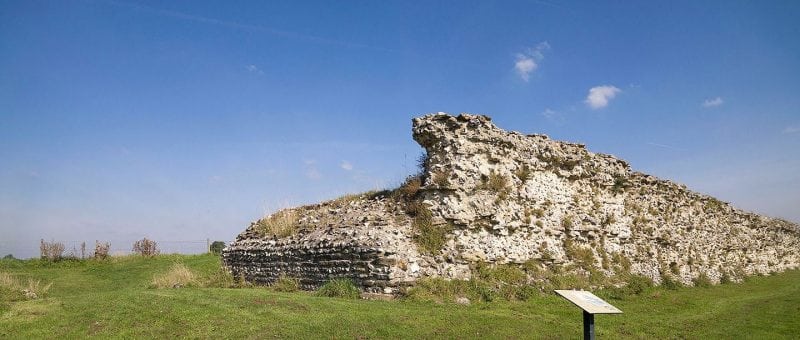
The Roman Ruins in Silchester
In 2014 in the last week of the dig, the team found what they believe to be the largest Iron Age hall ever found in Britain. The thought is that this huge hall which was around 8 meters by 50 meters and may have been Commius’s home. They believe this is due to a beautiful iron age brooch that was apparently deliberately deposited in the foundations.
The first Roman buildings on the site were light military structures, and the historians think (due to the archaeological evidence) that the town was burnt down and they guess it might have been done during the Boudicca rebellion.
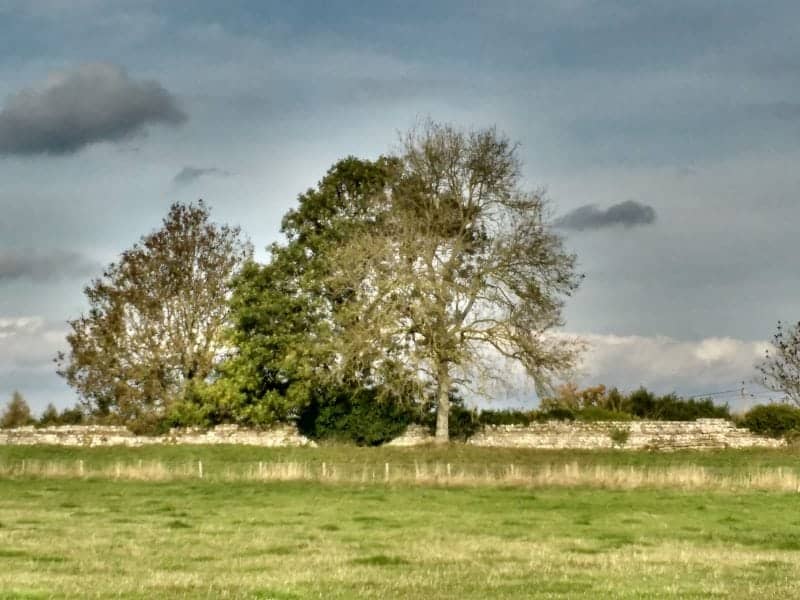
In the sixth century, the town was abandoned apparently the population fled and that evidence comes from finding filled-in wells and abandoned artefacts. Eventually, nature reclaimed the land and the buried Roman town was marked only by the remains of its walls. to this day the mystery still remains as to why.
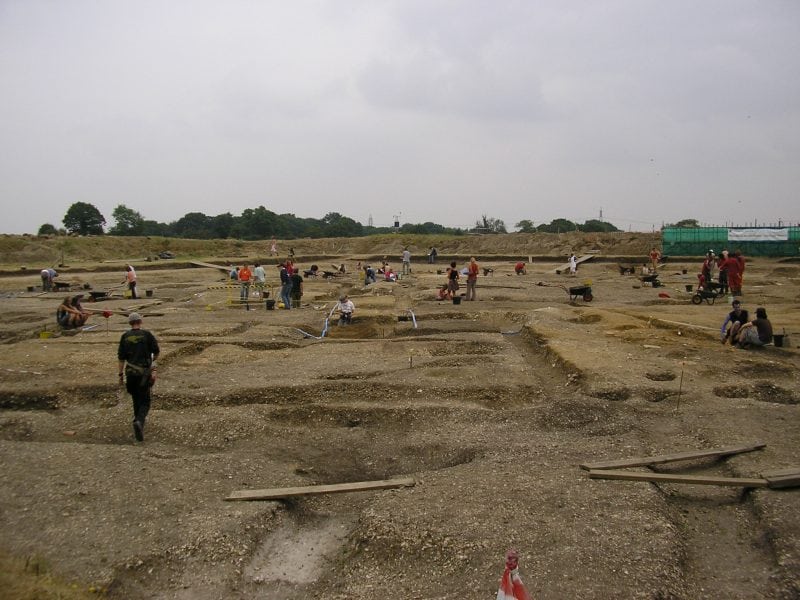
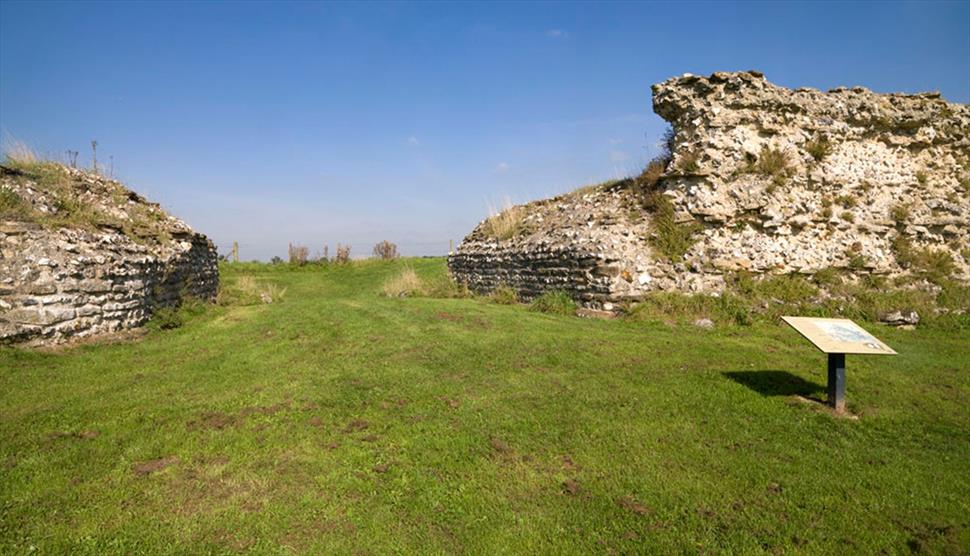
Silchester Roman Town Walk
This 2.2-mile flat walk, is suitable for all the family and dogs, with no stiles. This is the real Roman tour and a step back in history, following the Roman walls and earthworks of Calleva Atrebatum, visiting its amphitheatre and calling in to see the 12th Century Church of St.Mary’s.
The starting point is the English Heritage Car Park at Silchester Roman Walls you can download a copy of the walk here.
If you head out to see the Roman Ruins at Silchester be aware that you can walk the walls and catch glimpses of them but the paths are not well marked and although it is a beautiful walk there is really not that much to see unless you use your imagination.
Here are more articles you may find interesting
23 Stunning English Manor Houses
Museum of Berkshire Aviation a hidden treasure in Reading England
